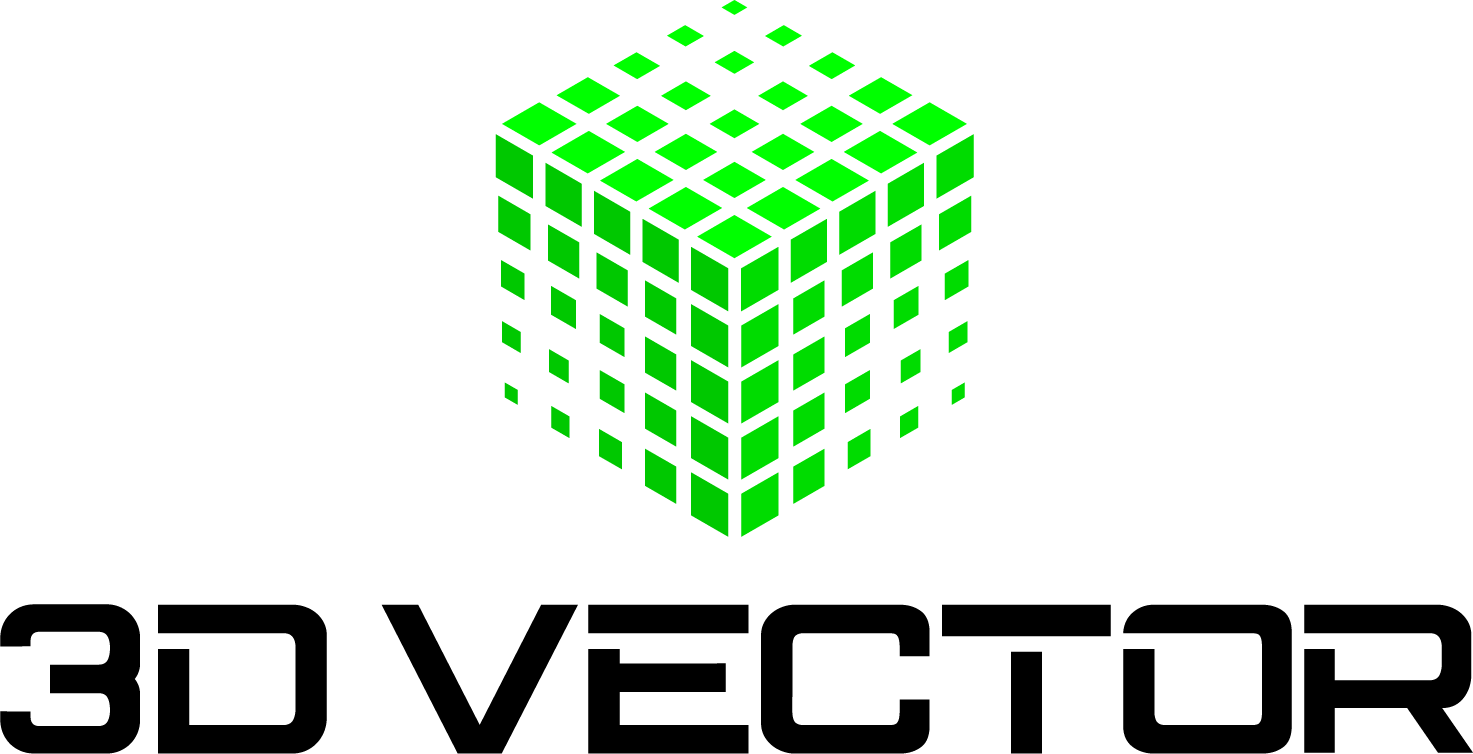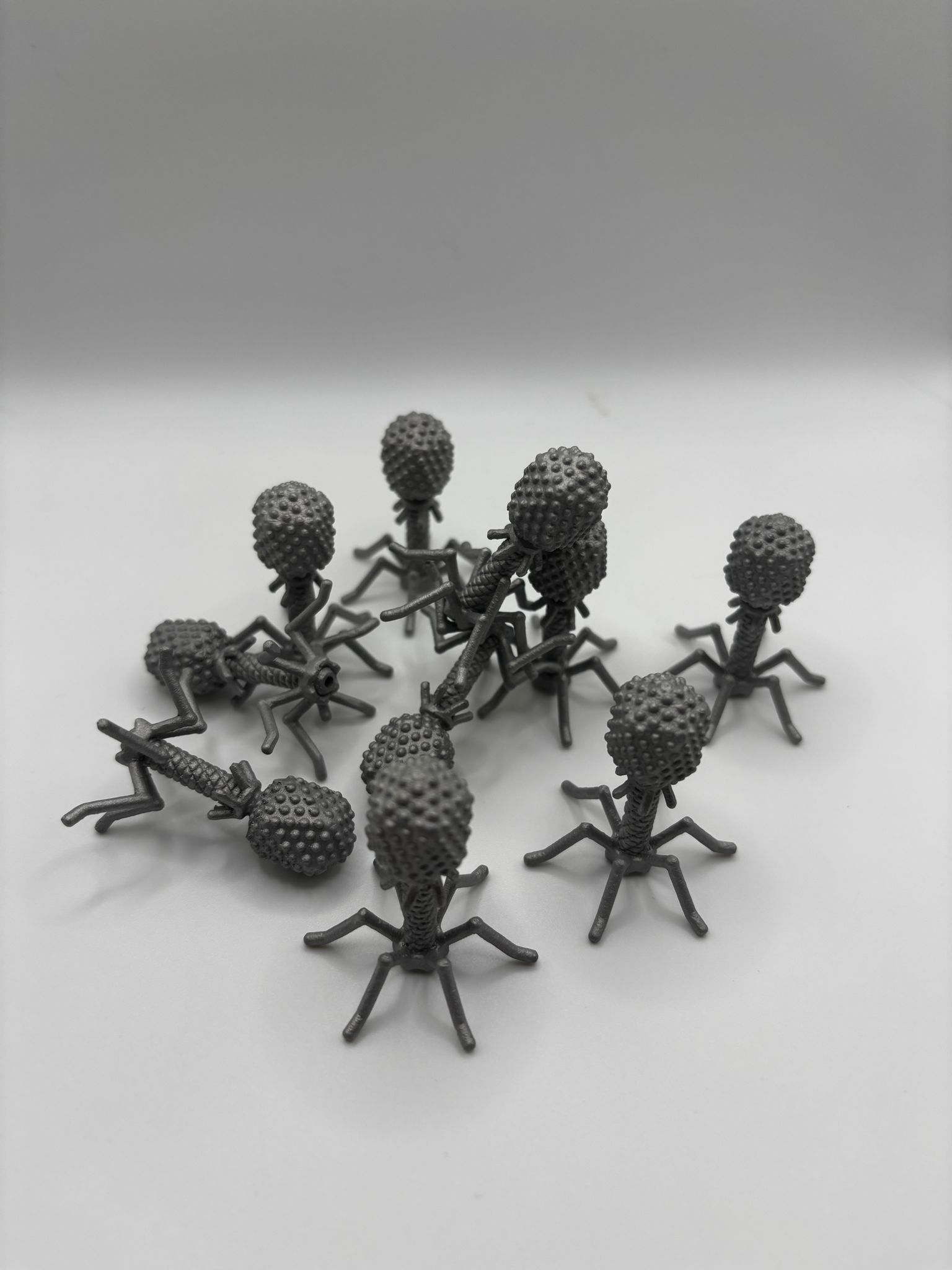When it comes to scientific visualization and educational tools, clarity, durability, and precision are non-negotiable. At 3D Vectors, we’ve always pushed the boundaries of what’s possible in additive manufacturing, not just through design excellence, but through materials innovation as well. Our latest project—bacteriophage samples built using aluminum 3D printing—is a testament to how advanced manufacturing can meet the intricate demands of science.
This blog post explores the intersection of cutting-edge 3D printing technology and microbiology, highlighting how we fabricated bacteriophage models in aluminum to support education, research, and display. Whether you’re in biotech, education, or science communication, this journey into aluminum 3D printing is a compelling case study in both innovation and impact.
What is a Bacteriophage?
A bacteriophage—often simply called a phage—is a type of virus that infects and replicates within bacteria. With their distinctive head-tail morphology and nanometer-scale size, bacteriophages are some of the most intriguing entities in virology. They are frequently used in scientific research, educational demonstrations, and increasingly, as therapeutic agents in antimicrobial resistance research.
However, visualizing a structure so tiny and complex is a challenge. That’s where our aluminum 3D printed bacteriophage models come in: precise, durable, and scientifically accurate representations that can be held, observed, and admired.
Why 3D Print Bacteriophages?
There are multiple compelling reasons for creating physical models of bacteriophages:
- Educational Engagement: Holding a physical model creates a stronger cognitive connection than viewing a 2D image. Students and trainees grasp the complexity of the virus’s structure much more intuitively.
- Scientific Demonstration: These models are perfect for microbiologists and virologists explaining phage therapy, viral lifecycles, or structural biology.
- Display and Promotion: Aluminum bacteriophages make for eye-catching and intellectually rich display pieces at conferences, labs, museums, or biotech offices.
Why Aluminum?
While PLA or resin-based 3D printing is common for educational tools, aluminum brings a new level of sophistication and endurance. Here’s why we chose aluminum for our bacteriophage samples:
- Durability: Aluminum ensures the models won’t chip or degrade over time, making them ideal for long-term use in classrooms or exhibitions.
- Tactile Quality: Aluminum gives a professional finish, adding weight and authenticity to the scientific representation.
- Heat and Corrosion Resistance: This is especially important for lab environments or long-term storage.
- Visual Appeal: The metallic surface reflects light in a way that draws attention to the model’s structural detail.
Our 3D Printing Process: From CAD to Printing
Creating these bacteriophage samples in aluminum required more than basic modeling—it demanded a perfect marriage of biology, engineering, and material science.
- Scientific Modeling
Our process started with the creation of a CAD model that faithfully represents the structure of a bacteriophage. We worked with bio-references to accurately design:
- The icosahedral capsid head
- Tail sheath
- Baseplate
- Tail fibers and pins
Each part had to be dimensioned with care, considering the limitations and capabilities of metal 3D printing, especially in maintaining thin features like tail fibers.
- Metal 3D Printing with SLM Technology
We used Selective Laser Melting (SLM) to 3D print the aluminum parts. This additive manufacturing process involves:
- Spreading a thin layer of metal powder (aluminum alloy)
- Using a high-power laser to fuse the powder layer by layer
- Building the part directly from the CAD design
SLM is known for producing parts with excellent mechanical strength, fine resolution, and geometric freedom, making it perfect for the intricacy required in bacteriophage structures.
- Post-Processing and Surface Finishing
Once printed, the bacteriophage samples underwent several post-processing steps:
- Support Removal: Carefully removing any supports without damaging the structural integrity.
- Heat Treatment: To relieve internal stresses from the laser melting process.
- Surface Blasting: Giving the samples a uniform, matte finish that enhances the fine detail and adds to the premium look.
- Optional Anodizing: For clients interested in color-coding their models for educational use.
Efficiency And Precision
Aluminum 3D printing is not only aesthetically pleasing and structurally sound—it’s also highly efficient. Here’s how:
- Batch Production: We can produce multiple models in a single build session, optimizing machine time and material use.
- Design Revisions: Easily adaptable CAD files allow for quick alterations depending on educational or display needs.
- Zero Tooling: No need for expensive molds or tooling, making it perfect for short runs or custom orders.
- Complex Geometries: SLM lets us produce shapes that are impossible with traditional subtractive methods, such as the tail fibers of bacteriophages.
Applications and Impact
The use cases for these aluminum bacteriophage models are broad:
Universities and Colleges: Biology departments can use these models to teach molecular biology, virology, or biotechnology courses. The tactile, visual nature helps students understand abstract concepts faster.
Medical Research Labs: With the growing interest in phage therapy as an alternative to antibiotics, these models help communicate ideas during grant presentations, public outreach, or team discussions.
Science Museums: They make for stunning exhibit pieces that draw curiosity while delivering accurate scientific education.
Biotech Conferences: Companies can showcase their innovation with branded, custom-colored bacteriophage models as conversation starters and product promotions.
Customization Options
At 3D Vectors, we don’t believe in one-size-fits-all. We offer a range of customizations for our bacteriophage models, including:
- Size scaling (from handheld to large desktop)
- Logo engraving for institutional or corporate branding
- Color anodizing or powder coating for visual differentiation
- Base integration with clear acrylic plaques or museum-style stands
The Future of Scientific Visualization
As additive manufacturing technologies continue to evolve, the ability to create highly detailed, durable, and customizable scientific models will become standard practice. At 3D Vectors, we are proud to be part of this transformation.
Our aluminum bacteriophage models are just one example of how we combine science, engineering, and design to create tools that educate, inspire, and elevate. Whether you’re looking to outfit a university lab or make a statement at a science expo, our models offer more than visual value—they spark curiosity and deepen understanding.
Ready to Order or Collaborate?
If you’re interested in ordering custom bacteriophage models or want to explore a project involving metal 3D printing for your institution, get in touch with our team at 3D Vectors. We’re always excited to bring new ideas to life—especially when they help make science more accessible and engaging.


